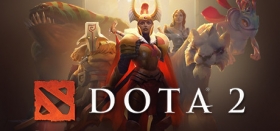
Dota 2 2020-2021 Season
With the shrinking number of players in Dota 2, Valve has begun massive changes for the upcoming season. This will guarantee that the season will still be competitive and likely drive more viewers towards their smaller venues of battle. This shift has worked well for games like League of Legends, but will Dota 2 be able to CC (crowd control) the viewers?
With the coming of 2020, Dota 2 has begun pulling out of its major tournaments for the 2020-2021 season. The schedule will now hold only three major tournaments. It’s quite a jump down from the five major and three minor tournaments they ran during the 2019-2020 season. Shifting focus away from the minor tournaments has brought Dota 2 towards a crossroads. With the minors gone, teams still search for points to reach the fabled International Tournament. With the culmination of hard work throughout the season, some players have questioned the new system in place, which has served since its commencement in 2017.
The Majors now numbered even fewer and the minors all but gone, how do teams earn their right to sit at the table in the end? The tournaments will be substituted by two-tier regional leagues. Leagues are the qualifiers for the few major tournaments remaining, but both league play and majors will grant qualifying points for the International Tournament. North America, South America, Europe, Cies, Southeast Asia, and China will be the regional leagues in the upcoming season. With fewer majors, DOTA believes they can have a longer running season, as well as more competitive. The number of teams per league is still undecided at this point., with Valve not running the leagues, but instead bidding it out. So this brings the possibility of all the leagues being online, and not LAN established. Now with the new league system, many have wondered if some of the older leagues will close down. This isn’t the case. Leagues will have a relegation system, much like the EPL. The last two teams in each region will drop to Tier 2, while the top two in Tier 2 rise to Tier 1. The teams at the bottom of Tier 2 will drop out of the league and have to go through open qualifiers in an attempt to get back in.
It’s exciting thinking about the upcoming season. Teams can now establish themselves and secure stability in league play if they’re not competing at the International level. Tournament providers will now see a constant flow of competitive play throughout the year. We’ll see games spread out over longer periods of time, hoping that it can catch viewers easier than the previous two-week sprint.









COMMENTS